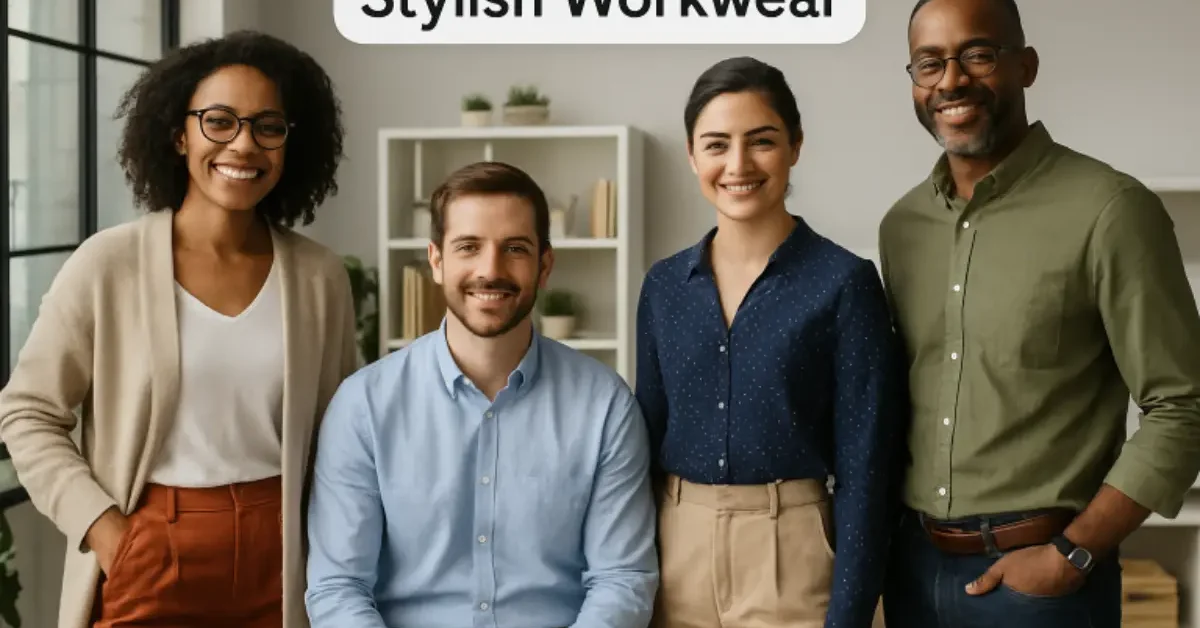Professional dress codes are transforming from the rigid, suit-centric expectations of the past to include styles that prioritize flexibility and comfort while maintaining a polished appearance. Today’s professionals are trading in stiff materials for fabrics that stretch and breathe, making it easier to transition from collaborative meetings to focused individual work. Resources such as workharddressright.com and industry leaders, like this New York Times article on smart-casual office dress codes, emphasize that your work wardrobe should empower you to tackle a diverse range of duties throughout your day.
These changes reflect a broader movement towards accommodating diverse work environments, especially with the rise of hybrid and remote roles. Instead of worrying about being “overdressed” or “underdressed,” employees increasingly favor attire that adapts to both virtual calls and in-person meetings. As office culture evolves, the meaning of professionalism is expanding—embracing what helps professionals look confident and feel comfortable in any setting.
Contents
Balancing Comfort and Authority
Striking a balance between being approachable and appearing authoritative is crucial in today’s workplaces. Studies, including a 2023 SHRM workplace attire poll, found that over 70% of employees believe a flexible dress code boosts productivity and engagement. As such, many organizations have updated their policies to favor smart-casual attire that feels relaxed but looks intentional.
Layerable pieces, weather-appropriate fabrics, and adjustable fits are now preferred for their versatility. These modern workwear staples can be easily dressed up with accessories or adapted with outer layers to meet more formal requirements. In this new era of dressing for work, a thoughtful wardrobe is as much about practicality as it is about projecting confidence.
Inclusivity and Personal Expression
Today’s workforce celebrates individuality and inclusivity, and these values are being woven into workwear policies. Employees expect options that fit diverse body shapes, accommodate different cultural backgrounds, and are gender-affirming. This evolution in attire has a positive impact—enabling professionals to feel authentically themselves while respecting company guidelines.
Companies now encourage subtle expressions of personality through color, patterns, or statement accessories—provided that personal flair doesn’t overwhelm the professional context. According to a recent report by CNBC, such gestures promote inclusivity and boost morale, improving the sense of belonging across teams.
The Role of Technology in Modern Workwear
Innovation in textiles has reshaped professional dress. Modern workwear harnesses the power of blends that offer stretch, moisture-wicking, and stain-resistance, delivering lasting comfort for long workdays. In tandem, sustainability sits at the forefront of recent advances as more companies adopt recycled fibers and lower-impact dye techniques in their collections, resulting in easier care and reduced environmental footprints.
Some retailers are innovating with tech-integrated fabrics that can regulate temperature or repel water, reducing the need for frequent washing and steaming. Many professionals are now seeking workwear solutions that are both high-performing and eco-conscious, leading to the rise of clothing brands that market low-maintenance, environmentally friendly attire.
Transitioning to Hybrid Work Environments
Workwear buying habits shifted radically as hybrid and remote work rose in prevalence. Instead of investing primarily in traditional pieces, professionals look for adaptable basics that deliver a crisp, “camera-ready” look for video calls and comfort for at-home productivity. Building a capsule wardrobe—an assortment of mix-and-match essentials—saves time and effort while enabling a flexible response to changing daily demands.
This streamlined approach not only declutters physical closets but also simplifies the mental load of decision-making—a win-win as people navigate new work routines. Professionals are investing in garments that easily transition from the home office to onsite client meetings, ensuring readiness for whatever their workdays may bring. For more guidance on optimizing your professional wardrobe for hybrid work, explore the resources found at The New York Times.
Industry Insights: What Do Employers Want?
Expectations for office attire continue to vary across industries. While sectors such as finance, law, and consulting often maintain stricter guidelines, creative and tech-driven companies are embracing relaxed dress codes that encourage comfort and creativity. No matter the field, however, adaptability remains a key skill: professionals who effortlessly switch between formal and casual looks are better positioned to align with client expectations and seize new opportunities.
Understanding your organization’s culture, client demographics, and the context of your role will help inform smart choices—and, importantly, ensure that your wardrobe is an asset, not an obstacle, to professional success.
Tips for Building a Modern Workwear Wardrobe
- Choose neutral and classic tones that mix and match easily.
- Invest in a few standout pieces, like a well-fitted blazer or durable footwear.
- Prioritize practical features—such as stretch, pockets, and weather resistance—for day-to-day needs.
- Incorporate sustainable and easy-care fabrics for lower environmental impact.
- Remember to reflect your style through thoughtful details and accessories.
Final Reflections
Modern workwear is more than just a fashion statement—it encapsulates a sophisticated blend of professionalism, comfort, and adaptability essential for today’s dynamic work environments. By making thoughtful and strategic apparel choices, individuals can effectively express their unique identities and personal style, while simultaneously showing respect for workplace norms and cultures.
Proper workwear not only enhances confidence but also enables individuals to perform at their highest potential, whether engaging in collaborative team efforts or undertaking solo tasks. Embracing these smart, intentional strategies allows professionals to build versatile wardrobes that meet the diverse demands of rapidly evolving industries and work settings.
Ultimately, investing in appropriate work attire positions individuals for greater career success and personal satisfaction, aligning their appearance with their professional aspirations and the expectations of modern workplaces.

